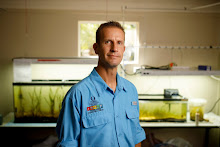Florida has a lot of problems with harmful algal blooms, due to nutrient pollution from wastewater and runoff; a problem that has grown exponentially along with the state's population. In Florida's lakes and rivers, the worst types of algae blooms are those comprised of toxic cyanobacteria, like the Microcystis aeruginosa currently covering Lake Okeechobee. US Representatives Brian Mast and Byron Donalds, from the east and west sides of South Florida, respectively, are sponsoring a bill that would require the harvest and repurposing of these cyanobacteria blooms. Is this is a good idea? Is it even possible? I have mixed feelings about it. Below is a link to a newspaper article about the bill, and below that is an explanation of what I think about it, which I orginally posted as a long reply-comment on facebook.
https://www.news-press.com/story/news/local/environment/2024/07/12/bill-would-have-corps-skim-cyanobacteria-from-waterways-to-make-biofuel/74205200007/
I'm always glad to see elected officials taking an interest in science and environmental issues. It is encouraging that Rep. Donalds and Mast recognize Florida’s algae bloom problems, the link between excess nutrients and algae blooms, and the potential for removal and repurposing of bloom biomass to help address the underlying problem of excess nutrients. I am concerned, however, that skimming/straining cyanobacteria from the water may be impractical compared with other forms of nutrient removal. I am leery of requiring use of these new technologies before their practicality has been vetted against established methods of nutrient removal that may give more bang for the buck. Muck dredging and mechanical removal of invasive aquatic plants are more proven methods for extracting excess nutrients from natural waterways, and I suspect that in most circumstances they are more cost effective than cyanobacterial skimming.
With regard to the conversion of wild algal biomass to biofuel, it's a neat idea but it's not first in my list of promising green fuel sources. For one thing you need a consistent, highly concentrated supply of algal biomass to feed into the biofuel process, but blooms in nature are spotty, spread out, and expensive to harvest and transport. Growing biofuel algae as part of sewage treatment processes is probably a better bet. In the US our eagerness to support biofuel enterprises has sometimes resulted in questionable decisions about what biofuel enterprises to subsidize. For example, huge federal subsidies to corn agriculture for ethanol biofuel have been good for corn farmers but have probably done more harm than good for the environment, since it takes so much fertilizer, pesticides, and fuel to grow corn. I think the moral of that corn story is we need to be cautious about which green enterprises we support at the federal level. Use of federal funds to support the development and evaluation of environmental technologies is great, but it’s important not to pick one winner prematurely and lock it into federal laws that are hard to reverse.
Finally, our first line of defense against algae blooms should always be tightening measures to prevent nutrients from getting into the water in the first place. Therefore, I would be hesitant to endorse big investments of public funds in nutrient removal projects before similar investments have been made in reducing nutrient loading. There are a lot of septic-sewer conversion projects that need support, a lot of outdated municipal wastewater treatment systems that need upgrades (fixing leaky underground sewer lines, etc.), a lot of agricultural and landscaping practices that need review and revision, a lot of stormwater treatment ponds and wetlands that need to be managed better, etc.
Monday 10 13 25 morning call
1 hour ago

No comments:
Post a Comment